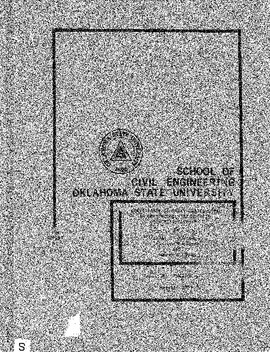| dc.creator | Zwerneman, Farrel J. | |
| dc.creator | Gunna, Srinivas R. | |
| dc.creator | Syed, Hameed S. | |
| dc.date.accessioned | 2018-10-15T15:24:22Z | |
| dc.date.available | 2018-10-15T15:24:22Z | |
| dc.date.issued | 1991-8 | |
| dc.identifier.govdoc | FHWA-OK-91-11 | |
| dc.identifier.other | Oklahoma Department of Transportation State Planning and Research item number 2168 | |
| dc.identifier.uri | https://hdl.handle.net/11244/301832 | |
| dc.description.abstract | Sections of Interstate 35 in Noble and Logan Counties of Oklahoma were recently reconstructed. The reconstruction involved replacing the existing pavement with continuously reinforced concrete pavement. On both projects, northbound lanes were reinforced with epoxy-coated steel and southbound lanes were reinforced with uncoated steel. This side-by-side construction provides an excellent opportunity tor comparing the performance of pavement constructed with epoxy-coated reinforcement to pavement constructed with uncoated reinforcement. The investigation described herein included a complete crack survey on both projects, installation of half-cell sites and gauge points, construction of laboratory specimens. and comparison of measured crack spacings and widths to calculated values. Results of the crack survey indicate that average crack spacing is stabilizing between 4 and 6 ft. Average crack spacing on pavements constructed with coated steel is less than on pavements constructed with uncoated steel, but the difference is small. Initial half-cell readings indicate little or no corrosion activity on either the coated or uncoated steel. Comparison of laboratory specimens constructed with coated and uncoated steel reveals no significant difference in terms of stiffness, force required to cause cracking, or average crack width. On the basis of the results of this investigation, it is concluded that performance early in the life of a continuously reinforced concrete pavement is not significantly affected by the use of epoxycoated reinforcing steel. However, if the reinforcement begins to corrode, the coated steel should have a significant advantage. It is recommended that crack surveys and half-cell measurements be performed on a regular basis to assess long-term effects. | |
| dc.format.extent | 86pages | |
| dc.format.extent | 43,590,245 bytes | |
| dc.format.medium | application.pdf | |
| dc.language | en_US | |
| dc.relation.ispartofseries | No | |
| dc.relation.requires | Adobe Acrobat Reader | |
| dc.title | Performance of epoxy-coated steel in continuously reinforced concrete pavement (FHWA-OK-91-11) 2168 | |
| dc.type | Technical Report | |
| dc.description.version | Final Report March 1989-August 1991 | |
| dc.description.peerreview | No | |
| dc.type.material | text | |
| dc.subject.keywords | Continuously Reinforced Concrete Pavement | |
| dc.subject.keywords | Epoxy-Coated Reinforcement | |
| dc.contributor.sponsor | Oklahoma Department of Transportation. Materials and Research Division. Office of Research & Implementation | |
